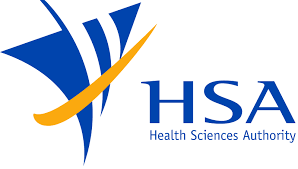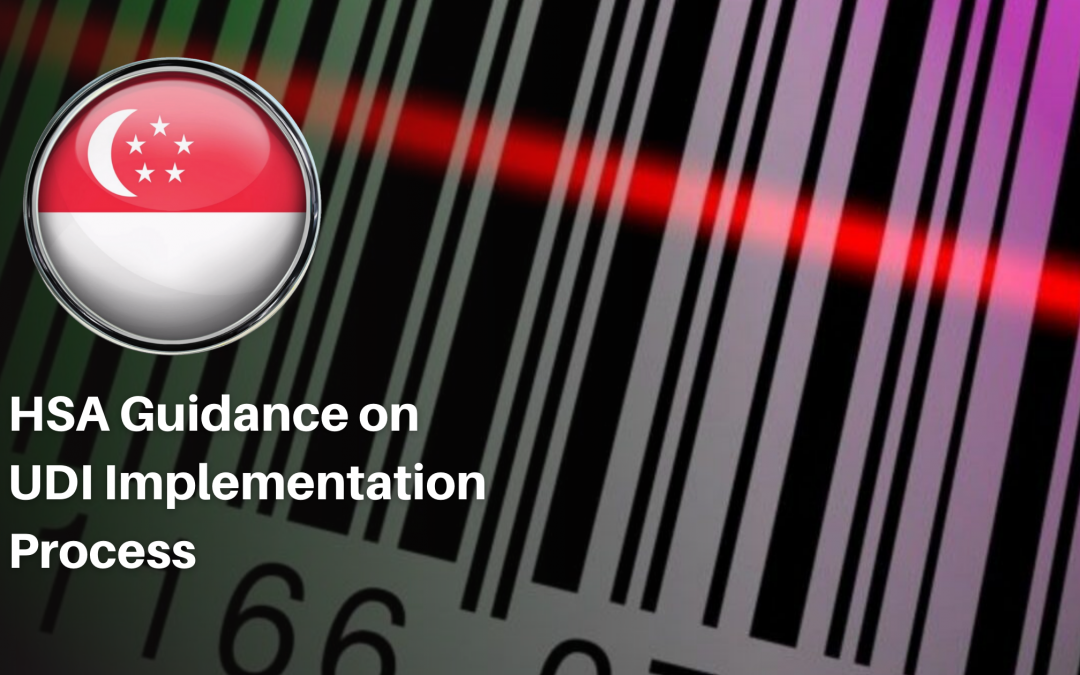The Health Sciences Authority (HSA), Singapore’s agency responsible for regulations in the sphere of healthcare products, has published a guidance document dedicated to the medical device unique device identification (UDI) system.

Table of Contents
Apart from the general overview of the UDI system covering applicable forms and data elements, the document describes in detail the implementation process. In particular, the scope of the document covers such aspects as:
- Designated issuing agencies entitled to issue unique device identifiers;
- Ensuring consistency in UDI requirements and implementation of generally accepted best practices;
- Direct marking on medical devices.
Developing and Placement of UDI for Medical Devices
First, the guidance describes the particular way unique device identifiers should be created. According to the document, manufacturers or product owners are responsible for accurately assigning and placing the UDI in HRI (human-readable) and AIDC (machine-readable) formats on the device label or on the device itself and on all higher levels of device package level hierarchy following the issuing agency’s specifications. Depending on the medical device in question, one of the following approaches should be applied:
- For medical devices already placed on the market in the US and/or EU, the responsible entity may use the same UDIs as used for these markets, provided that information about UDIs has been duly submitted and included in the appropriate databases.
- In the case of medical devices that have not been placed on the market in the US or EU, the responsible entity will have to create unique device identifiers in accordance with the applicable national requirements adopted in Singapore. For this purpose, it should contact an issuing agency duly designated by the regulating authority.
According to the guidance, an issuing agency (IA) is an organization designated by HSA to operate a system for the issuance of UDIs for regulatory purposes. The document further describes the criteria an interested organization should meet in order to be eligible for designation, namely:
- Actual presence in the country;
- Operating a UDI issuance system compliant with the applicable international standards;
- Issuing unique device identifiers that are efficient in identifying the product within its whole lifecycle;
- Operating on the basis of transparent terms and making the system available;
- Providing an undertaking to the regulating authority regarding information exchange.
An organization interested in a designation as an issuing agency should contact the regulating authority by virtue of the appropriate online form.
Another important aspect addressed in the guidance relates to the use of the same device identifier for newer devices that are subject to certain changes in comparison to the initial version for which the device identifier has been assigned previously. The authority states that in such a case, a misidentification could take place, so the appropriate measures should be taken.
In particular, a responsible entity shall consider the issuance of a new identifier in the case of changes to:
- Brand name;
- Device version or model;
- Clinical size (including volume, length, gauge, diameter);
- Labelled as single-use;
- Packaged sterile;
- Need for sterilization before use;
- Quantity of devices provided in a package;
- Critical warnings or contradictions; e.g. containing latex or Bis (2-Ethylhexyl) phthalate (DEPH);
- New packaging configurations.
The HSA acknowledges that medical devices already placed on the market could be subject to certain changes reasonably necessary to improve their safety and performances and emphasizes that all significant changes should result in changes to the device’s UDI-DI accordingly in order to ensure correct identification of the particular modification of the device.
The guidance also provides additional clarifications regarding the applicable regulatory requirements related to direct marking, which, for the purpose of the document, stands for placing the UDI and, potentially the full UDI carrier, permanently on the device itself. This approach is usually applied for multiple-use medical devices that are reprocessed between uses in order to avoid cross-contamination and other safety-related issues. The HSA emphasizes that in such cases, the labeling should be placed in such a manner that ensures it will remain clearly visible even after numerous reprocessing cycles the device could be subject to during its lifecycle.
In this regard, the medical device manufacturer shall take into consideration the following aspects:
- Potential interference arising from any type of direct marking on the safety or performance/effectiveness of the device;
- Technological feasibility of direct marking on the specific device in question.
For this purpose, the features and characteristics of the marking technology should be considered.
Additionally, if a direct marking-device identifier (DM-DI) is used, the responsible entity shall provide the appropriate number to be included in the medical device database.

Submission of UDI Data Elements to UDI Database
As mentioned, it is mandatory for the medical device manufacturer or another party responsible for a medical device to submit information about it to the national database. The authority has already implemented certain improvements to the existing online submission system, the Medical Device Information and Communication System (MEDICS), and has also announced the new eService, which could be used to upload information related to unique device identifiers. The responsible parties will also be able to amend and update UDI-related information on a voluntary basis even before this will be required under the applicable regulations.
The aforementioned eService allows responsible entities to upload information about UDI-Device Identifiers and the issuing agency. A single application for registration could cover up to 30 devices. It is important to mention that such change to the information kept in the database does not require a change notification application to be submitted. However, the responsible party will have to declare that the information about the medical device itself remains valid. Once the application is approved by the authority, the information about the UDI-DI and issuing agency will be reflected in the appropriate entry in the Singapore Medical Device Register (SMDR), the country’s database for medical devices. At the same time, in order to amend information related to other UDI elements, the responsible party will have to submit a change notification application in accordance with the general rules.
The document also contains a screenshot showing the interface of the new eService, including the steps to be followed and the information to be provided. According to the screenshot, the responsible entity shall follow the procedure below:
- Download special excel document;
- Update the excel and upload the new version;
- Verify the information provided in the summary table;
- Indicate the UDI Issuing Agency (tick the box corresponding to the particular Issuing Agency);
- Provide information about other changes;
- Submit additional documentation that could be reasonably necessary for the authority when reviewing the application.
In summary, the present HSA guidance describes in detail the process of implementation of the new UDI system. The document highlights the most important aspects related to the issuing agencies which will be responsible for issuing unique device identifiers and also provides guidelines regarding how the responsible party may change information about UDI-DI and issuing agency in the national database.
Sources:
How Can RegDesk Help?
RegDesk is a next-generation web-based software for medical device and IVD companies. Our cutting-edge platform uses machine learning to provide regulatory intelligence, application preparation, submission, and approvals management globally. Our clients also have access to our network of over 4000 compliance experts worldwide to obtain verification on critical questions. Applications that normally take 6 months to prepare can now be prepared within 6 days using RegDesk Dash(TM). Global expansion has never been this simple.


